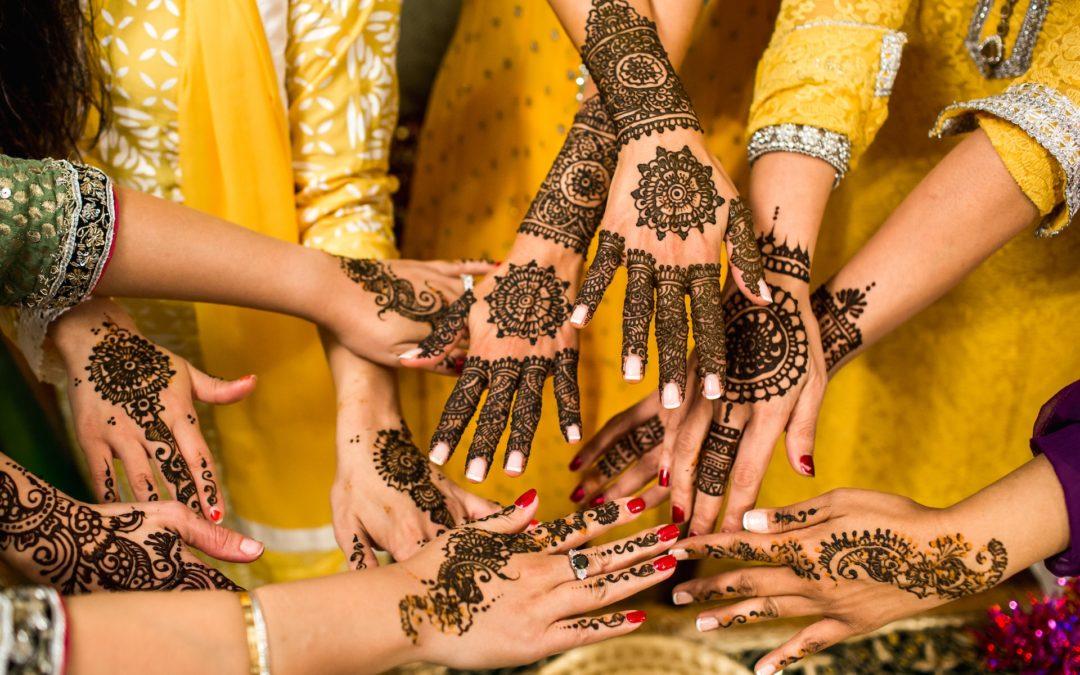In our interconnected world, the collision of diverse cultures often gives rise to a fascinating array of interactions and exchanges. However, within this tapestry of human experiences, cultural tensions can emerge—complex and dynamic phenomena that reflect the intricacies of navigating differences in values, beliefs, customs, and social norms. This exploration delves into 30 examples of cultural tensions, offering insights into the rich interplay of diverse perspectives that shape our global society. From language barriers to gender roles, and religious practices to technological disparities, these examples illuminate the challenges and opportunities inherent in the coexistence of varied cultural backgrounds. Each instance serves as a lens through which we can examine the complexities of cultural interactions, fostering a deeper understanding of the dynamics that shape our diverse and interconnected world.
What is Cultural Tension?
Cultural tension refers to the stress or conflict that arises when different cultural values, beliefs, or practices interact. It often occurs in societies where diverse cultural groups coexist and can manifest in various forms such as misunderstandings, disagreements, or conflicts over cultural norms. This tension can be exacerbated by factors like language barriers, historical conflicts, or socio-economic differences. Addressing cultural tension typically involves promoting understanding, respect, and communication between different cultural groups, as well as policies that foster inclusivity and diversity.
Cultural tension can also emerge when there are competing cultural narratives or when cultural traditions come into conflict with modern societal norms. In a globalized world, where cultures are constantly interacting and influencing each other, cultural tension can be both a challenge and an opportunity for growth and learning. It often highlights the need for effective cross-cultural communication and the importance of cultural competence in various sectors, including education, business, and government. Effectively managing cultural tension involves recognizing the value of diverse perspectives and finding common ground while respecting cultural differences. This process can lead to a more harmonious and inclusive society, where individuals from different cultural backgrounds can coexist and collaborate effectively.
Key Examples of Cultural Tension
1. Language Barriers – Communication breakdowns due to linguistic differences can result in misunderstandings, reinforcing the importance of language as a key aspect of cultural identity. Addressing these barriers requires patience and efforts to promote multilingual understanding.
2. Religious Practices – Tensions may arise when individuals from diverse religious backgrounds encounter conflicting beliefs or rituals. The challenge lies in fostering mutual respect and understanding and recognizing the significance of religious diversity as a valuable aspect of human culture.
3. Gender Roles – Varied cultural expectations regarding the roles of men and women can create tension, particularly in societies undergoing rapid social changes. Balancing tradition with evolving gender dynamics requires open dialogue and societal reflection.
4. Ethnic Stereotypes – Prejudices based on ethnic backgrounds can lead to discrimination and social divisions. Overcoming these tensions necessitates challenging stereotypes through education and promoting cultural sensitivity.
5. Cultural Appropriation – Borrowing elements from one culture by another without understanding or respect can lead to accusations of disrespect. It calls for a nuanced discussion on appreciating cultural diversity while avoiding exploitation and appropriation.
6. Nationalism – Strong nationalistic sentiments may clash with globalist perspectives, reflecting the ongoing tension between preserving cultural identity and embracing a more interconnected world. Striking a balance involves acknowledging both local and global realities.
7. Cultural Assimilation – Pressure to conform to a dominant culture can strain individuals trying to maintain their cultural identity. Building inclusive societies involves recognizing and appreciating the richness that cultural diversity brings.
8. Generational Conflicts – Differences in values and perspectives between generations can lead to tension. Bridging the generation gap requires open communication and an understanding of the societal changes shaping each generation.
9. Social Class Disparities – Economic and social inequalities can fuel tensions between different socioeconomic groups. Addressing these disparities involves advocating for social justice and policies that promote equality.
10. LGBTQ+ Rights – Differing attitudes toward LGBTQ+ rights can highlight cultural divides. Navigating these tensions involves fostering inclusivity, challenging prejudices, and promoting equal rights for all.
11. Food Customs – Dietary practices and preferences can become points of tension, especially in multicultural settings. Encouraging culinary appreciation and understanding different food cultures can help overcome these challenges.
12. Political Ideologies – Divergent political beliefs within a society can lead to polarization and cultural tension. Encouraging respectful discourse and finding common ground is crucial for maintaining social cohesion.
13. Education Systems – Differences in educational approaches may create tension. Recognizing and respecting diverse methods of learning and knowledge acquisition can contribute to a more inclusive education system.
14. Traditional vs. Modern Values – Conflicts can arise when traditional values clash with modern perspectives. Striking a balance involves respecting heritage while embracing societal evolution.
15. Caste Systems – In societies with rigid caste structures, tensions may emerge due to discrimination or inequality. Addressing these issues requires challenging ingrained prejudices and advocating for social justice.
16. Artistic Expression – Different cultural norms and sensitivities regarding art and expression can lead to conflicts. Encouraging artistic freedom while respecting cultural boundaries is essential for fostering creativity and understanding.
17. Cultural Pride vs. Cultural Sensitivity – Finding a balance between cultural pride and sensitivity is crucial. It involves celebrating one’s heritage without dismissing or undermining the cultural experiences of others.
18. Environmental Values – Divergent views on environmental conservation and sustainability can create tension. Promoting cross-cultural collaboration for environmental solutions is essential for addressing global challenges.
19. Privacy Norms – Varied expectations about personal space and privacy may lead to cultural misunderstandings. Cultivating awareness and respecting different privacy norms contribute to smoother interpersonal interactions.
20. Fashion Norms – Cultural differences in clothing styles can lead to tension or judgment. Encouraging an appreciation for diverse fashion aesthetics helps challenge stereotypes and fosters a more inclusive perspective.
21. Technology Usage – Varied levels of technological adoption can create a digital divide. Bridging this gap involves promoting equitable access to technology and fostering digital literacy.
22. Family Structures – Differences in family values can lead to tension, especially in multicultural societies. Acknowledging and respecting diverse family structures contribute to social harmony.
23. Medical Practices – Varied cultural approaches to health may lead to tension. Building culturally competent healthcare systems involves understanding and incorporating diverse perspectives on wellness.
24. Social Etiquette – Divergent norms regarding greetings and politeness can cause cultural misunderstandings. Navigating social etiquette involves being open to learning and adapting to different cultural practices.
25. Migration Issues – Cultural tensions may arise when people from different backgrounds move to a new region. Creating inclusive communities involves welcoming newcomers and fostering cross-cultural understanding.
26. Work Ethic – Different cultural perspectives on work can create tension in the workplace. Promoting diversity and inclusion in professional settings involves recognizing and appreciating varied work styles.
27. Holidays and Celebrations – Varied cultural practices during holidays can lead to tension. Promoting cultural awareness and inclusivity during celebrations helps build a sense of community.
28. Individualism vs. Collectivism – Differences in cultural emphasis on individual rights versus community values can create tension. Striking a balance involves understanding and appreciating both perspectives for societal harmony.
29. Beauty Standards – Divergent perceptions of beauty and body image may lead to cultural tension. Promoting diverse representations of beauty challenges narrow standards and fosters inclusivity.
30. Human Rights – Varied interpretations of human rights may lead to tension on a global scale. Advocating for universal human rights involves navigating cultural differences while upholding fundamental principles of equality and dignity.
Importance of Cultural Tensions
Cultural tensions, a fabric woven deeply into the tapestry of our global society, are an essential, albeit complex, component of human interaction. At their core, these tensions arise from the differences in beliefs, traditions, and values that distinct cultural groups hold. These differences, rather than being divisive, are a crucible for growth and understanding, offering a mirror through which societies can reflect and evolve.
Consider, for instance, the impact of cultural exchange. When people from diverse backgrounds interact, they bring with them unique perspectives and experiences. This convergence can lead to friction, undoubtedly, but also to a rich exchange of ideas. It’s akin to a marketplace of traditions and thoughts where each interaction has the potential to broaden horizons and deepen understanding. From the fusion of cuisines to the blending of languages and arts, cultural tensions have historically been a driving force behind some of the most vibrant and dynamic aspects of human civilization.
Importantly, these tensions challenge the status quo. They prompt individuals and communities to question deeply ingrained beliefs and practices, paving the way for societal change and progress. When faced with perspectives that differ from our own, we are compelled to think more critically about the world and our place within it. This introspection is a catalyst for personal growth and societal advancement.
Moreover, navigating cultural tensions equips people with crucial life skills. It fosters empathy, as understanding differing viewpoints requires putting oneself in another’s shoes. It enhances adaptability, an increasingly valuable trait in our rapidly changing world. And it builds communication skills, as effective dialogue across cultures demands clarity, patience, and openness.
However, these tensions are not without their challenges. Misunderstandings and conflicts can arise, often fueled by stereotypes or a lack of knowledge. Herein lies the importance of education and dialogue. Schools, media, and various social platforms play a pivotal role in providing accurate information about different cultures and in promoting constructive conversations. Through education and open dialogue, cultural tensions can be navigated more effectively, minimizing conflict and maximizing understanding.
Pros of Cultural Tensions
Diversity of Ideas – Cultural tensions promote a vibrant exchange of diverse perspectives, fostering an environment where contrasting ideas can coexist. This diversity catalyzes innovation and creativity, driving societies to explore new solutions to shared challenges.
Cultural Evolution – Tensions within cultures encourage adaptation and evolution. Societies facing cultural tensions often undergo transformative processes, reevaluating norms and practices in response to changing circumstances and perspectives.
Increased Awareness – Cultural tensions draw attention to the existence and significance of diverse cultures. This heightened awareness promotes understanding and a deeper appreciation for the complexities that shape human societies, fostering a more informed and enlightened global community.
Personal Growth – Individuals navigating cultural tensions often experience substantial personal growth. The challenges posed by these tensions compel individuals to broaden their perspectives, enhance their adaptability, and develop a more nuanced understanding of cultural dynamics.
Conflict Resolution Skills – Dealing with cultural tensions hones valuable conflict resolution skills. Individuals learn to navigate differences, negotiate compromises, and find common ground, essential abilities applicable in various personal and professional settings.
Cultural Exchange – Tensions act as catalysts for cultural exchange, facilitating the sharing of traditions, customs, and values between different communities. This exchange contributes to a richer cultural tapestry and promotes mutual understanding.
Social Progress – Cultural tensions can drive social progress by prompting societies to reassess and reform outdated norms and practices. This process of reflection and reform is crucial for fostering positive social change and ensuring inclusivity.
Global Connectivity – Tensions on a global scale can lead to increased interconnectedness. Nations facing shared challenges are prompted to collaborate, fostering a sense of global community and mutual responsibility.
Cultural Preservation – Tensions may arise from efforts to preserve and protect cultural identity. This emphasis on cultural preservation contributes to the safeguarding of diverse cultural heritages, preventing their erosion in the face of external influences.
Critical Thinking – Navigating cultural tensions encourages individuals to think critically about their own beliefs and cultural biases. This process of self-reflection and critical examination fosters intellectual development and open-mindedness.
Cultural Hybridization – Tensions can lead to the blending of cultural elements, giving rise to new, enriched forms of expression and identity. This cultural hybridization contributes to the dynamic and ever-changing nature of human cultures.
Increased Sensitivity – Cultural tensions heighten sensitivity to cultural nuances. Individuals become more attuned to the intricacies of different cultural practices, fostering a more refined understanding and appreciation of diversity.
Social Justice Advocacy – Tensions may fuel activism and advocacy for social justice. Individuals and communities, prompted by cultural tensions, often become champions for equality, addressing issues of discrimination and inequality.
Cultural Resilience – Societies facing tensions develop resilience as they adapt to changing cultural landscapes. This resilience ensures the continued existence and relevance of cultures in the face of external influences.
Promotion of Human Rights – Cultural tensions draw attention to violations of human rights. This increased awareness prompts international dialogue and efforts to establish universal ethical standards, fostering a collective commitment to the protection of human dignity.
Cons of Cultural Tensions
Social Division – Tensions can lead to social division, fostering an “us vs. them” mentality. This division creates barriers between cultural groups, hindering social cohesion and cooperation.
Prejudice and Discrimination – Cultural tensions may contribute to the perpetuation of stereotypes, prejudices, and discriminatory practices between different cultural groups. These biases can result in social inequalities and strained relationships.
Communication Breakdowns – Misunderstandings and communication breakdowns may occur as a result of cultural tensions. Differences in communication styles and cultural norms can hinder effective interaction, leading to conflicts.
Identity Crisis – Intense cultural tensions can trigger identity crises, especially among individuals caught between conflicting cultural expectations. This internal struggle may lead to a sense of displacement and uncertainty.
Conflict and Strife – Cultural tensions may escalate into conflicts and strife, resulting in violence, discrimination, or social unrest. Managing and resolving such conflicts requires diplomatic efforts and a commitment to understanding.
Resistance to Change – Tensions may lead to resistance against cultural change. This resistance can hinder societal progress and adaptation to evolving circumstances, impeding positive transformations.
Cultural Insensitivity – Tensions can sometimes result in cultural insensitivity, where individuals fail to appreciate or respect the values and norms of others. This lack of sensitivity can perpetuate misunderstandings and perpetuate stereotypes.
Loss of Cultural Heritage – In extreme cases, cultural tensions may contribute to the erosion or loss of unique cultural practices, languages, and traditions. Preservation efforts become crucial to safeguarding cultural heritage.
Isolationism – Cultural tensions might lead to isolationism, where communities become resistant to external influences. While preserving cultural identity is important, complete isolation can hinder the benefits of cultural exchange.
Xenophobia – Tensions can fuel xenophobia, fostering fear or aversion towards people from different cultural backgrounds. Overcoming xenophobia requires efforts to promote understanding and acceptance.
Inequality – Cultural tensions may exacerbate existing social inequalities, with certain cultural groups facing discrimination and marginalization. Addressing these inequalities requires a commitment to social justice.
Polarization – Tensions can contribute to polarization within societies, making it challenging to find common ground and collaborate on shared goals. Bridging these divides requires efforts to foster dialogue and understanding.
Cultural Appropriation – In attempting to navigate tensions, there is a risk of cultural appropriation, where elements of one culture are improperly adopted by another. This can lead to exploitation and disrespect.
Loss of Cultural Authenticity – Intense tensions may lead to a dilution or loss of cultural authenticity. Communities may compromise their unique cultural identity in response to external pressures, impacting the richness of cultural diversity.
Stress and Mental Health Impact – The stress associated with cultural tensions can have negative implications for individuals’ mental health. Anxiety, depression, and feelings of isolation may result, emphasizing the importance of promoting mental well-being in diverse cultural environments.
How Can Cultural Tensions Be Addressed?
Addressing cultural tensions requires a multifaceted approach that encompasses both individual and societal levels. Education plays a pivotal role in fostering cultural awareness and understanding. Implementing comprehensive educational programs that teach cultural competence, diversity appreciation, and the history of different communities can help break down stereotypes and reduce ignorance. Encouraging open dialogues within educational institutions and workplaces allows individuals to share their cultural experiences and perspectives, promoting empathy and mutual respect.
On a broader societal level, policies that promote inclusivity and equal opportunities can contribute to mitigating cultural tensions. Governments and organizations can implement anti-discrimination laws and initiatives that protect the rights of individuals from diverse backgrounds. Additionally, fostering diverse representation in media, politics, and other influential spheres can help challenge stereotypes and provide positive role models. Promoting intercultural communication and collaboration initiatives can further bridge gaps between communities, creating an environment where cultural diversity is not only acknowledged but celebrated as a valuable asset to society.
Can Cultural Tensions Lead To Positive Outcomes?
While cultural tensions are often associated with challenges and conflicts, they can also serve as catalysts for positive outcomes under certain circumstances. These tensions may stimulate critical self-reflection within communities and individuals, encouraging them to reevaluate their beliefs and prejudices. In this process, societies can undergo positive transformations by recognizing the need for inclusivity and embracing diversity as a source of strength rather than a source of division. Such tensions can act as a driving force for social change, prompting the reevaluation of institutional norms and practices that may perpetuate discrimination.
Moreover, cultural tensions can spur innovation and creativity as people from different backgrounds come together to address common issues. The clash of ideas and perspectives can lead to the development of novel solutions and approaches that draw from the strengths of diverse experiences. In this way, cultural tensions, when managed constructively, have the potential to foster resilience and adaptation, contributing to the evolution and enrichment of societies as they navigate the complexities of cultural diversity.
How Can Organizations Address Cultural Tensions In The Workplace?
Organizations can proactively address cultural tensions in the workplace by implementing diversity and inclusion initiatives. This begins with establishing clear policies that promote equal opportunities, fair treatment, and a workplace culture that values diversity. Training programs on cultural sensitivity and unconscious bias can help employees develop awareness and understanding of different cultural perspectives, reducing the likelihood of misunderstandings and conflicts. Creating a supportive environment where employees feel comfortable expressing their cultural identities and experiences is essential in fostering inclusivity.
Effective communication channels are crucial in addressing and preventing cultural tensions. Organizations should encourage open dialogue, providing forums where employees can discuss cultural differences and share their perspectives. This may involve implementing regular team-building activities, diversity training sessions, and mentorship programs that facilitate positive interactions among employees from diverse backgrounds. Additionally, leadership plays a key role in setting the tone for an inclusive workplace culture, and organizational leaders should actively promote and model inclusive behaviors to ensure that cultural tensions are addressed and resolved in a constructive manner.
Can Cultural Tensions Be Eliminated?
While complete elimination of cultural tensions may be an ambitious goal, it is challenging to entirely eradicate them due to the inherent diversity of human societies. Cultural tensions often arise from differences in values, beliefs, and traditions, which are deeply ingrained in individuals and communities. Instead of aiming for elimination, a more realistic approach involves managing and mitigating cultural tensions through proactive measures. This includes fostering open communication, promoting cultural awareness, and providing education on diversity and inclusion. By creating an environment where individuals feel respected and understood, organizations and societies can minimize the negative impact of cultural tensions and facilitate constructive dialogue.
It’s crucial to recognize that some level of cultural tension may persist, as diversity itself inherently brings about differing perspectives. However, the goal should be to transform these tensions into opportunities for growth, understanding, and collaboration. By embracing the positive aspects of cultural diversity and implementing strategies to address conflicts constructively, societies and organizations can work towards minimizing the adverse effects of cultural tensions while harnessing the potential benefits that arise from the richness of diverse experiences and perspectives.
Read Also: 20 Best Examples of Global Community
Read also: 30 Top Examples of Selfishness in Daily Life
The Most Popular on BitGlint

Top 100 Optimism Examples & Definition
Optimism is more than just looking on the bright side. It’s a mindset that shapes how people face challenges, make...

60 Things That are Unpredictable
No matter how much we plan, life has a way of surprising us. Some things follow a routine, but others can change in an...

30 Wishful Thinking Examples & Meaning
Wishful thinking is something we all do at some point. You hope things will turn out fine—even if there’s no real...

100 Things That Come in Pairs
Pairs are all around us. From what we wear to how we live, many of the things we use or see every day come in twos....

20 Frequency Examples in Daily Life and Physics
Have you ever noticed how often things repeat in everyday life? Maybe it’s the steady ticking of a clock, the rhythmic...

20 Infinity Examples & Definition
Infinity is one of the most powerful ideas people have ever thought about. It shows up in math, science, philosophy,...

30 Examples of Pragmatism & What It Really Means
What does it really mean to be pragmatic? It’s a word people often hear, but not everyone fully understands. In...
Get Inspired with BitGlint
The Latest
30 Satisfaction Examples & Meaning
Satisfaction is a feeling everyone knows but may find hard to describe clearly. It’s the quiet relief you get after finishing a tough job, the warmth you feel when spending quality time with loved ones, or even the simple comfort of eating a good meal when you're...

30 Naivety Examples & Definition
Naivety is something most people experience at some point in their lives. It often starts in childhood, but for some, it lasts much longer than it should. While it's not always obvious, naivety shows up in how we think, how we trust, and how we make decisions. Many...
100 Things That Are in The Sky
The sky is full of things - some you see every day, others only once in a while. Some are natural, like clouds and stars. Others are made by people, like airplanes and satellites. From quiet sunsets to loud rocket launches, the sky is never empty. People have been...
50 Contrast Examples in Life, Art & Literature
We notice contrast all the time, even if we don’t think about it. It's there when the sky shifts from light to dark. It’s in the stories we read, the art we look at, and the conversations we have. Contrast helps us tell things apart. It helps us feel, understand, and...

